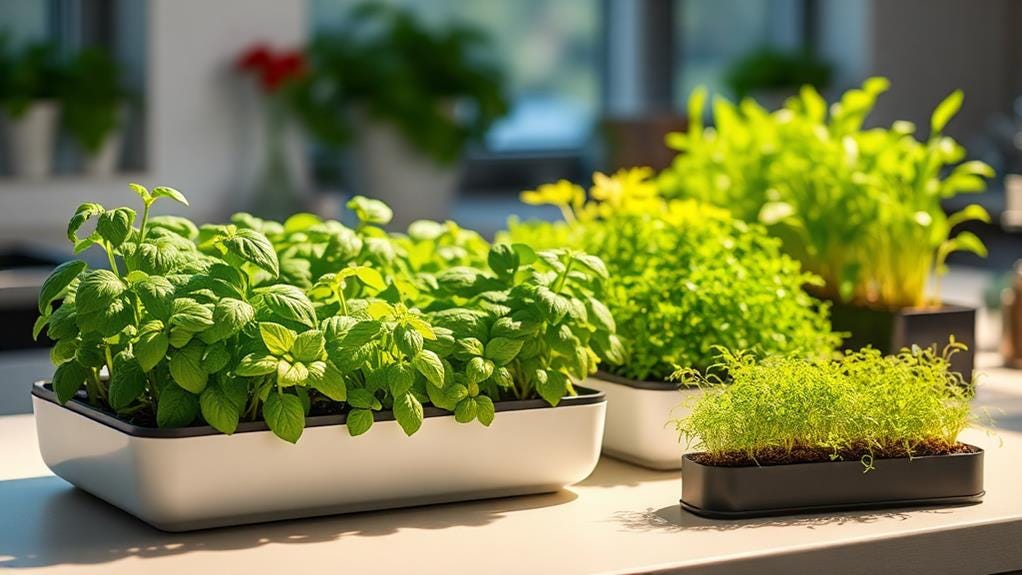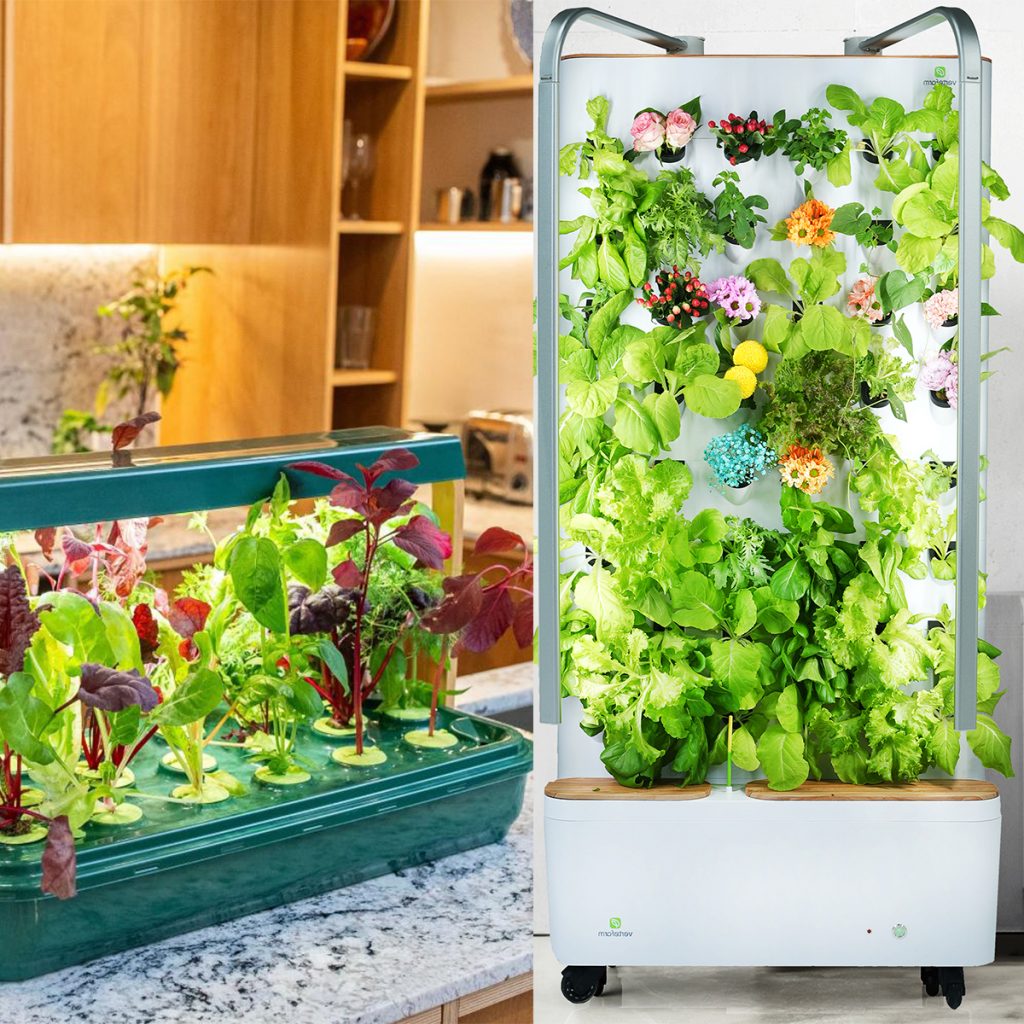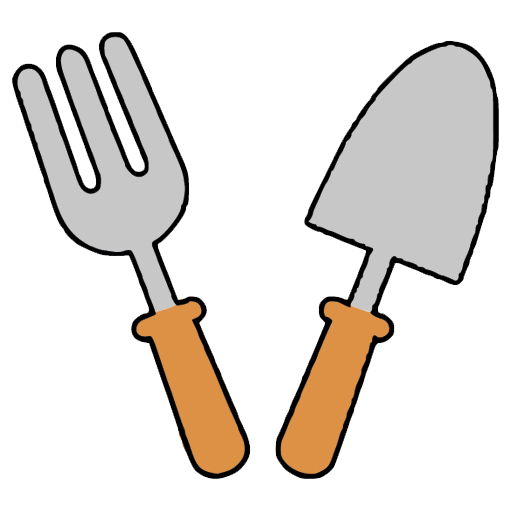An indoor hydroponic garden lets you grow herbs, salad greens, and even small fruits using water and nutrients instead of soil. With the right system, you can harvest fresh food year-round — even in a small flat with very little natural light.
If you’re new to indoor growing tech, our smart indoor garden beginner’s guide is a good starting point before you choose a hydroponic system.
Contents
- 0.1 What Is an Indoor Hydroponic Garden?
- 0.2 Why Choose an Indoor Hydroponic Garden?
- 0.3 Key Features to Look For in the Best Indoor Hydroponic Garden
- 0.4 Types of Indoor Hydroponic Garden Systems
- 0.5 How to Choose the Best Indoor Hydroponic Garden for Your Home
- 0.6 Basic Care Tips for Indoor Hydroponic Gardens
- 0.7 FAQs About Indoor Hydroponic Gardens
- 0.8 Final Thoughts on Choosing the Best Indoor Hydroponic Garden
- 0.9 Related Articles
- 1 Choose the Best Grow Lights for Strong, Healthy Growth
What Is an Indoor Hydroponic Garden?
An indoor hydroponic garden is a compact system where plant roots grow in water enriched with nutrients rather than in soil. The system usually includes:
a reservoir that holds water and nutrients
net pots or pods that support the plants
a pump or wicking system to move water to the roots
LED grow lights to replace or supplement sunlight
Because the roots get a steady supply of water and nutrients, plants often grow faster and produce more than they would in pots of soil.

Why Choose an Indoor Hydroponic Garden?
An indoor hydroponic garden offers several advantages over traditional pots:
Faster growth
Plants often grow more quickly because nutrients are delivered directly to the roots.
Cleaner and mess-free
No bags of compost, spilled soil, or fungus gnats in potting mix.
Space efficient
Many systems are designed for countertops or shelves, making them ideal for small homes.
Year-round harvests
You can grow salad greens, herbs, and compact vegetables even in winter or in rooms without sunny windows.
According to this university guide to home hydroponic systems, controlled environments with consistent water, nutrients, and light are the main reasons hydroponic gardens can outperform soil-based setups in small indoor spaces.
Key Features to Look For in the Best Indoor Hydroponic Garden
When you’re comparing systems, focus on features that match your space, budget, and goals.
System size and capacity
Smaller units hold 3–6 plants and are perfect for a few herbs. Larger systems can handle 9–20 or more pods, ideal if you want salads and herbs for the whole household.
Type of hydroponic system
Most home units use deep-water culture (roots suspended in nutrient solution) or a wick or pump-fed design. For beginners, pre-assembled systems are usually easiest.
Built-in grow lights
Good hydroponic gardens use full-spectrum LED lights with adjustable height so they can move up as plants get taller. This is crucial if your home doesn’t get strong natural light.
Water level indicators and reminders
Simple sight windows, float indicators, or app alerts prevent the reservoir from running dry.
Noise level and maintenance
Some pumps are almost silent, while others hum more noticeably. Check how often the system needs cleaning or refilling before you buy.
Types of Indoor Hydroponic Garden Systems
Countertop hydroponic herb gardens
These compact systems sit on a kitchen counter or windowsill and are ideal for basil, parsley, mint, coriander, and other herbs you use regularly. A well-designed countertop hydroponic herb garden kit is usually the easiest starting point for beginners.
(add your Amazon affiliate link to the phrase “countertop hydroponic herb garden kit”)
Medium-size family systems
These have larger reservoirs and more planting sites, so you can grow lettuce, pak choi, rocket, and small chilli or tomato varieties. They’re ideal if you cook at home a lot or share harvests with family.
Vertical or rack-style hydroponic gardens
Tall units with stacked rows use vertical space efficiently and can produce larger amounts of food. They suit people who are serious about growing but still need to stay indoors.
Hybrid smart-hydroponic systems
Some hydroponic gardens connect to apps that track lighting schedules, remind you to top up nutrients, and monitor water levels, combining hydroponics with smart-garden features.

How to Choose the Best Indoor Hydroponic Garden for Your Home
When deciding which system to buy, think about how you’ll actually use it day-to-day.
Ask yourself:
What do I want to grow most? Herbs, leafy greens, or small fruits?
How much space do I have? Only a counter, or room for a taller unit?
How hands-off do I want it to be? Am I okay checking water every few days, or do I want a larger tank that runs longer between top-ups?
Do I enjoy tech features? If you like apps and data, a more advanced system might be worth it.
If you’re planning to run your indoor hydroponic garden regularly, investing in a reliable hydroponic nutrient solution for indoor gardens can make a big difference to plant health and flavour.
Basic Care Tips for Indoor Hydroponic Gardens
Even with automation, the best indoor hydroponic garden still needs a little care.
Check water levels regularly
Top up the reservoir before it runs low, especially when plants are large and drinking more.
Refresh nutrient solution
Follow the manufacturer’s instructions to replace or top up nutrients. Old solution can lead to salt build-up and weaker growth.
Clean between crops
Rinse the tank, wipe surfaces, and remove any algae or root residue between plantings. This keeps the system fresh.
Trim roots and foliage when needed
Fast-growing plants can crowd others. Prune gently to keep airflow and light reaching every plant.
Watch temperature and light
Keep the system away from direct radiators or cold draughts, and let the built-in LEDs do the bulk of the work.
FAQs About Indoor Hydroponic Gardens
1. What can I grow in an indoor hydroponic garden?
Most systems are ideal for herbs, salad leaves, and small fruiting plants like cherry tomatoes or chillies. Some larger units can also handle dwarf varieties of cucumbers or peppers.
2. Is an indoor hydroponic garden hard to maintain?
Not usually. Once it’s set up, most of the work is topping up water, adding nutrients, and giving the system a quick clean between crops.
3. Does a hydroponic garden use a lot of electricity?
LED grow lights and small pumps are fairly energy efficient. Power use is usually comparable to running a few bright bulbs for several hours a day.
4. Do I need special water for hydroponics?
Tap water is fine in many areas, but very hard or heavily treated water can cause issues. If in doubt, you can use filtered or softened water and follow the nutrient instructions closely.
5. Is an indoor hydroponic garden worth it if I already grow in pots?
Yes, if you want faster growth, cleaner harvesting, and reliable results in low-light seasons. Many people use hydroponics for herbs and salads while keeping larger plants in soil.
Final Thoughts on Choosing the Best Indoor Hydroponic Garden
The best indoor hydroponic garden is the one that fits your space, budget, and lifestyle. Whether you choose a small countertop herb unit or a larger vertical system, hydroponics can give you fresh, home-grown food with far less mess and guesswork than traditional pots. Focus on good lighting, a reliable nutrient routine, and a system size you’ll comfortably maintain, and you’ll be surprised how much you can grow indoors.
Once you’ve chosen your system, you can decide how high-tech you want to go — from simple timers to fully automated smart setups.
Related Articles
LIGHT YOUR INDOOR GARDEN THE RIGHT WAY
Choose the Best Grow Lights for Strong, Healthy Growth
Great lighting is just as important as water and nutrients for indoor hydroponic gardens. Learn how to pick the best lights for indoor gardening so your herbs and greens stay compact, productive, and full of flavour.

